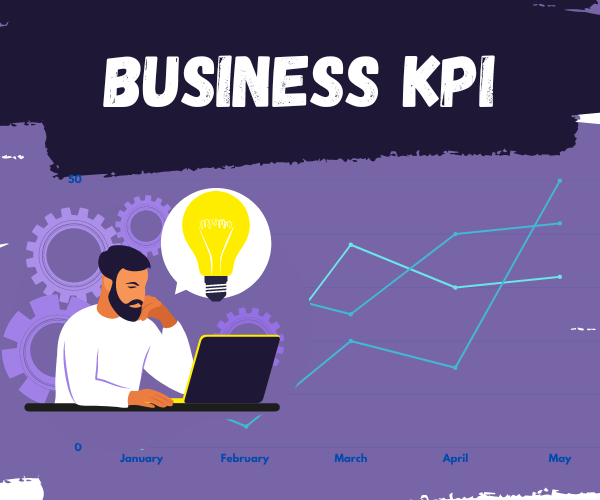
Business - SME
How To Plan Your Financial Future Using Cash Flow Forecasting
One of the best ways to ensure that you have the financial stability you need for the future is by maintaining a cash-flow forecast. A cash-flow forecast is a list of all of your income and expenses, as well as how much money you expect to have in your bank account at any given time.
What is Cash Flow Forecasting?
Forecasting cash flow is the process of estimating future cash receipts and payments. A cash flow forecast is used to plan for shortfalls or surpluses in your business’s cash balance.
A cash flow forecast is created by estimating future revenue and expenses. This can be done using historical data, trends, seasonality, and other factors. The goal is to create a realistic picture of what your cash flow will look like in the future so that you can make informed decisions about how to manage your finances.
There are a number of different methods that can be used to forecast cash flow. The most important thing is to use a method that makes sense for your business and produces accurate results.
Some common methods of forecasting include:
- Financial models: Financial models are mathematical equations that are used to predict future financial outcomes. These models can be used to forecast cash flow, but they require detailed knowledge of accounting and finance.
- Spreadsheets: Spreadsheets are a popular tool for forecasting cash flow because they are flexible and easy to use. You can create a spreadsheet yourself or use software that already has templates and formulas set up.
- Expert opinions: If you don’t have the time or expertise to forecast cash flow yourself, you can hire someone who does. This could be a financial consultant, accountant, or another professional with experience in forecasting.
The Importance of Cash Flow Forecasting
It is critical to have a clear understanding of your cash flow in order to make sound financial decisions. Cash flow forecasting is a tool that can help you do just that.
Cash flow forecasting involves estimating the future inflows and outflows of cash for your business. This information can be used to make informed decisions about how to allocate resources and manage risk.
There are several benefits of cash flow forecasting, including:
- improved decision-making: With a clear picture of your future cash flows, you can make better decisions about how to allocate resources and manage risk.
- reduced financial stress: By understanding your future cash needs, you can take steps to reduce financial stress and anxiety.
- increased profits: Proper management of cash flow can lead to increased profits and improved financial stability.
If you want to improve your financial future, cash flow forecasting is an essential tool.
Why You Need a Plan
One of the most important things you can do for your financial future is to create a cash flow forecast. This document will help you track your income and expenses so you can see how much money you have coming in and going out each month. It’s an essential tool for creating a budget and tracking your progress over time.
There are a few key reasons why you need a cash flow forecast:
- To Create a Budget: A cash flow forecast is a foundation for creating a budget. Without it, you won’t be able to track your progress or make informed decisions about your spending.
- To Track Your Progress: A cash flow forecast allows you to track your progress over time. You can see how well you’re doing in terms of saving money and meeting your financial goals.
- To Make Informed Decisions: A cash flow forecast gives you the information you need to make informed decisions about your finances. For example, if you’re considering making a major purchase, you can use your cash flow forecast to determine if you can afford it.
How to Use Cash Flow Forecasting to Create Your Financial Plan?
Cash flow forecasting is a powerful tool that can help you plan your financial future. By using cash flow forecasting, you can create a detailed picture of your current financial situation and identify potential problems before they arise.
cash flow forecasting can help you:
- Understand where your money is coming from and going to
- Identify potential cash flow problems before they occur
- Create a budget that reflects your current financial situation
- Make informed decisions about how to allocate your resources
The first step in using cash flow forecasting to create your financial plan is to gather information about your income and expenses. You can use online tools, like Mint or YNAB, to track this information automatically. Alternatively, you can manually track your income and expenses in a spreadsheet. Once you have this information, you need to input it into a cash flow forecast template.
There are a number of different cash flow forecast templates available online, like this one from thebalance.com. Once you have inputted your information into the template, the template will generate a report that shows your projected cash flow for the next 12 months. This report will show both your expected income and expenses, as well as any surplus or deficit in each month.
Surplus or deficit? What does that mean? If your projected income is greater than your projected expenses, you have a surplus. This means that you will have extra money left over each month after all of your bills are paid. If your projected expenses
Conclusion
Cash flow forecasting is a powerful tool that can help you plan your financial future and make informed decisions about your money. By tracking your income and expenses, you can get a clear picture of where your money is going and how much you have available to save or invest. With cash flow forecasting, you can take control of your finances and make choices that will help you reach your financial goals. Give it a try today!




